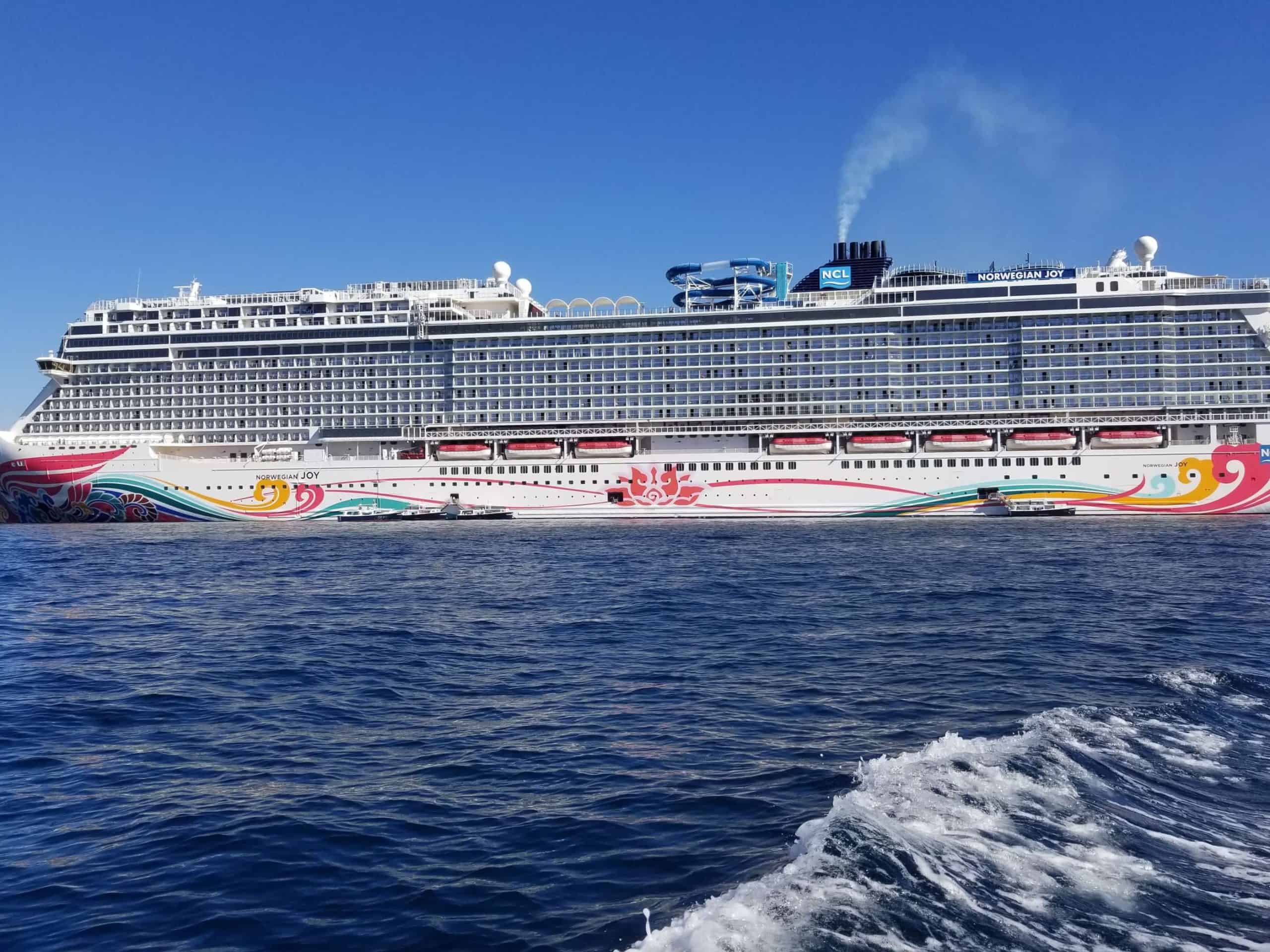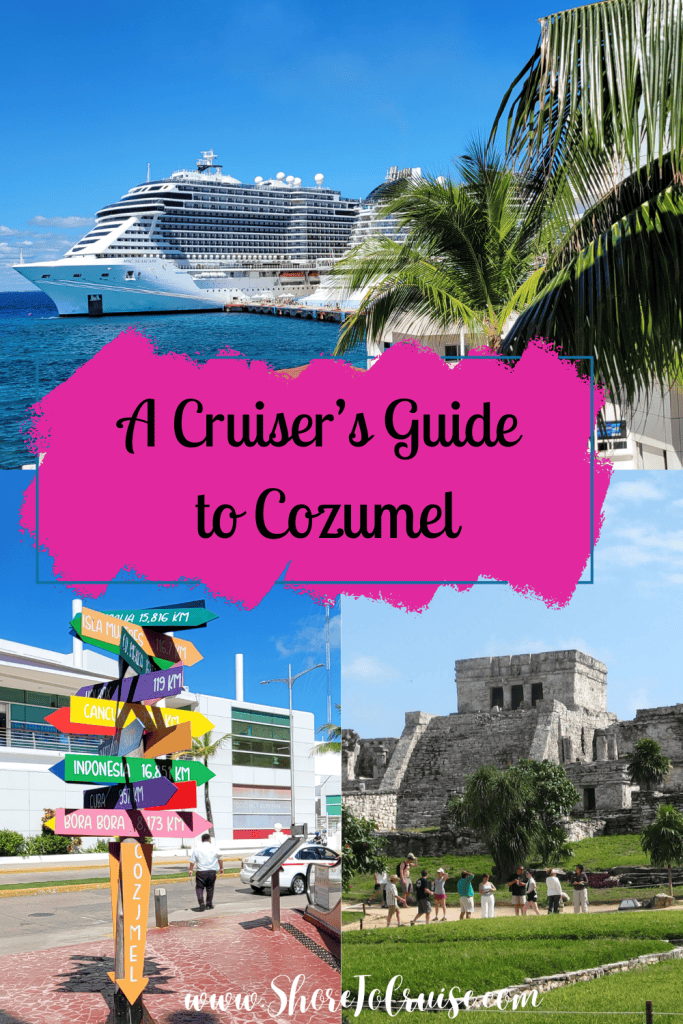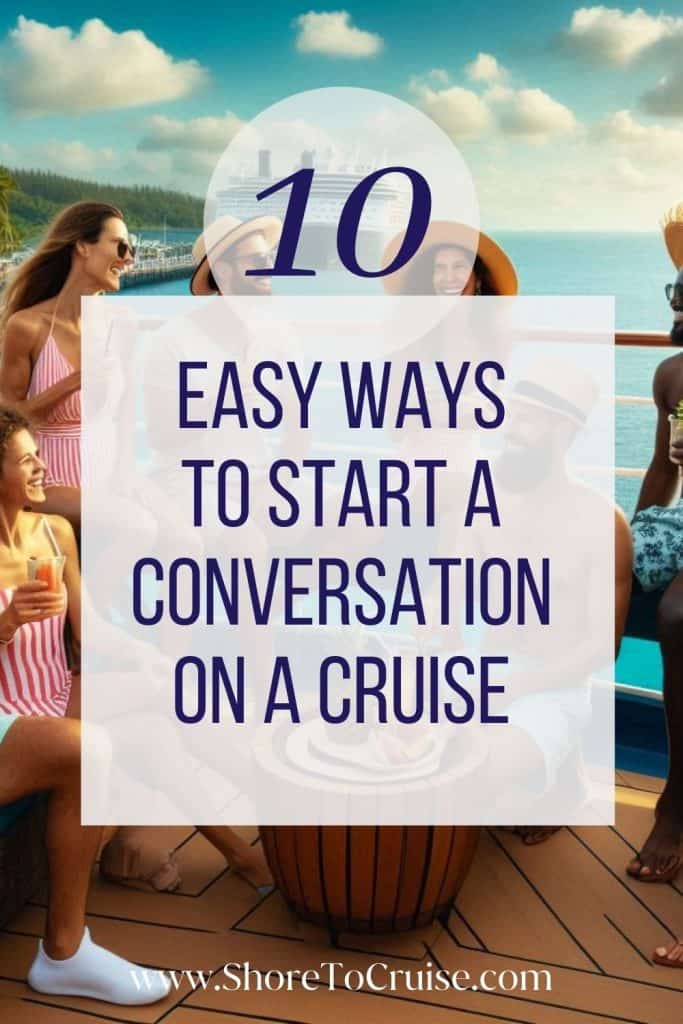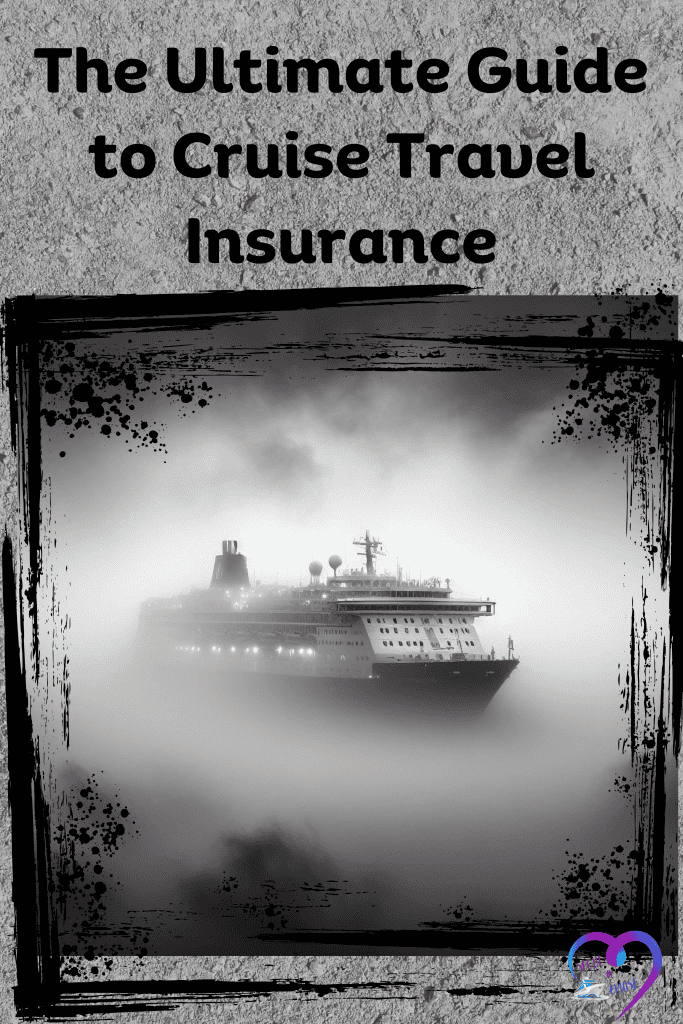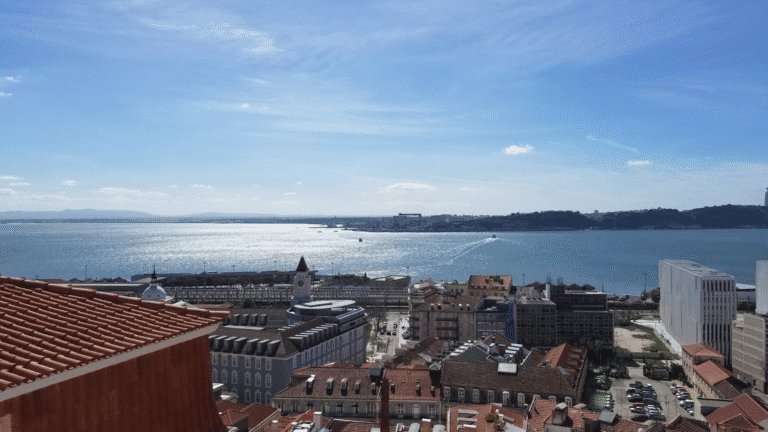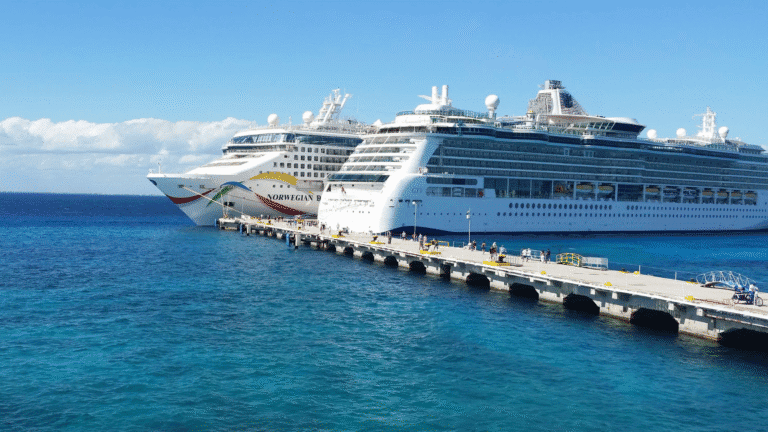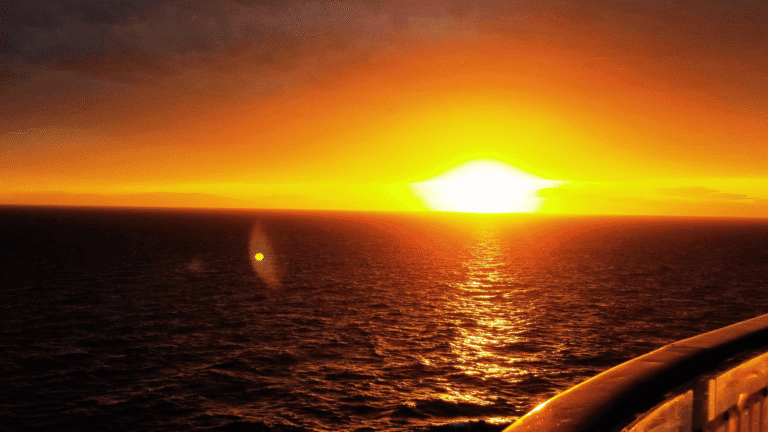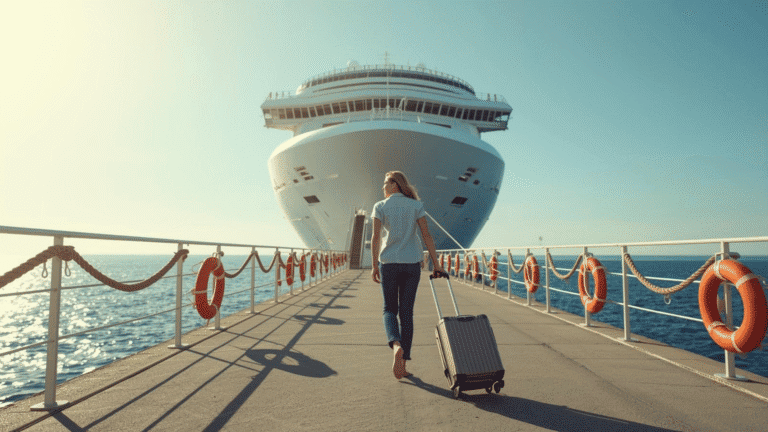Tender Boats on a Cruise: What They Are, How They Work & Tips for Smooth Sailing
Have you ever wondered what happens when your cruise ship can't dock right at the pier? That's where tender boats come in. Simply put, they’re smaller boats that ferry passengers between the cruise ship and shore when the ship can’t dock directly at a port. These smaller vessels play a crucial role in getting passengers from ship to shore at ports that can't accommodate large ships. While the process can sound a bit intimidating, it's actually pretty straightforward and can even turn into part of the adventure.
Key Takeaways: Tender Boats on a Cruise
- Tender boats are smaller vessels that ferry passengers between ship and shore when docking isn’t possible.
- They’re free, safe, and usually run every few minutes while the ship is anchored.
- Allow 30–45 minutes of extra time for shore excursions at tender ports.
- Common tender ports include Santorini, Grand Cayman, and Bar Harbor.
- Pro tip: Bring comfy shoes and a waterproof bag for easy boarding.
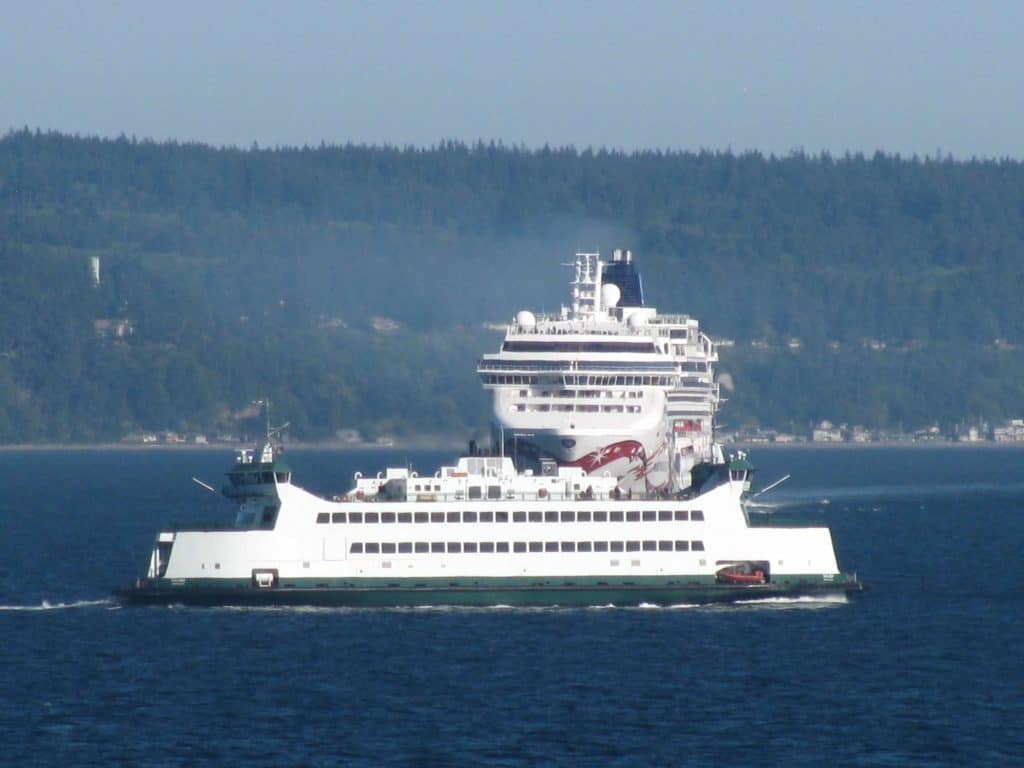
Please remember that I may receive a commission when you click on my links to make a purchase. This, however, has no bearing on my content, reviews and comparisons. I will do my best to keep things fair and balanced to assist you in making the best decision for you. You can find more information about my Privacy Policy here
In this guide, you'll learn everything you need to know about tender boats—how the process works, what to expect, and tips to make your experience smooth and stress-free. Whether you're planning independent shore excursions or sticking with cruise line-organized outings, coordination and timing are key. For more insight into planning excursions, explore my suggestions here with Viator's Shore Excursions and Activities guide.
From grabbing tender tickets on board to ensuring you plan enough time to get back to the ship, these tips will help you navigate the process like a cruise pro—so you can focus on enjoying your destination rather than stressing over logistics.
Table of Contents
What Are Tender Boats?
Not all ports are created equal when it comes to accommodating large cruise ships. That’s where tender boats come in. These smaller vessels serve as your shuttle between the cruise ship and the shore when docking isn’t an option. For many first-time cruisers, the idea of climbing aboard one of these boats might bring up questions. Are they safe? How do they even work? Don’t worry—you’re about to become a tender boat pro.
Purpose of Tender Boats
Tender boats are used when a cruise ship cannot dock directly due to limited pier space, environmental conservation efforts, or shallow waters. Ports like Great Stirrup Cay or Half Moon Cay are examples of tender ports that rely on this process. In these situations, the ship anchors offshore, and passengers are transported to land via tender boats. This system is particularly common on private islands or small ports where infrastructure hasn’t caught up with the size of modern mega-ships.
For passengers, this offers a unique opportunity to see the grandeur of their ship floating in the open water, a view you’d never get from a docked vessel. However, it’s important to plan ahead. If you’re booking third-party shore excursions, make sure to communicate with your provider about the tender schedule. Always allow extra time to disembark and return to the ship to avoid missing important activities or, worse, your cruise departure. For additional tips on managing your itinerary, check out guides on shore excursions and cruise planning.
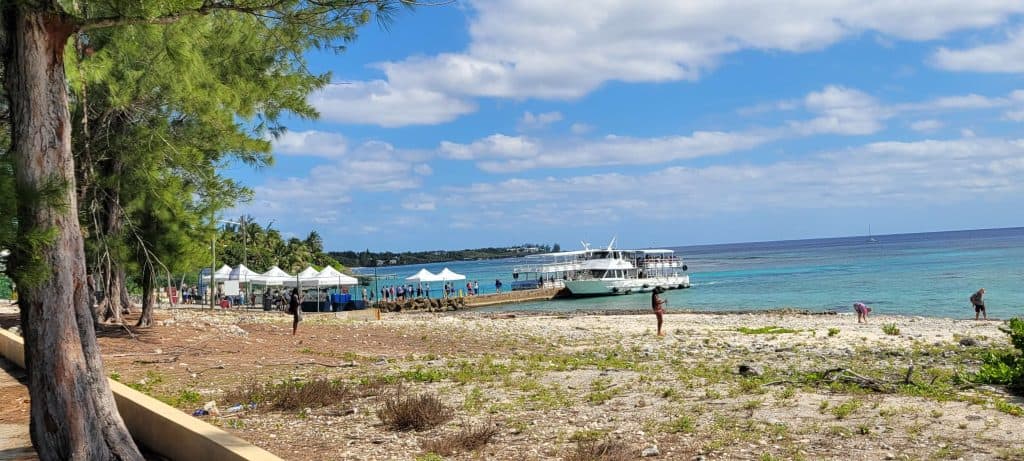
How Tender Boats Operate
The tendering process might seem daunting at first, especially if you’re new to cruising, but it’s a well-organized system designed for efficiency. Here’s how it works:
- Boarding on the Ship: Once anchored, the crew will make announcements about tendering schedules and ticket distribution. Depending on the ship and your cabin category, you might need to pick up complimentary tender tickets. Luxury suite guests or those on ship-sponsored excursions often enjoy priority access.
- The Tender Ride: After boarding the tender, you’ll typically have a short ride—usually under 10 minutes—to reach the shore. These boats are built to handle passenger transfers safely. Feeling a little nervous? Don’t worry; the ride is brief, and staff are always there to assist you through the process.
- Disembarking Ashore: Once docked, you’ll step onto dry land and start exploring your destination. When it’s time to return, you’ll follow a similar process in reverse. Remember to listen for ship announcements about the last tender back to avoid being left behind. The last tender back can be a different time time from your All Aboard time!!
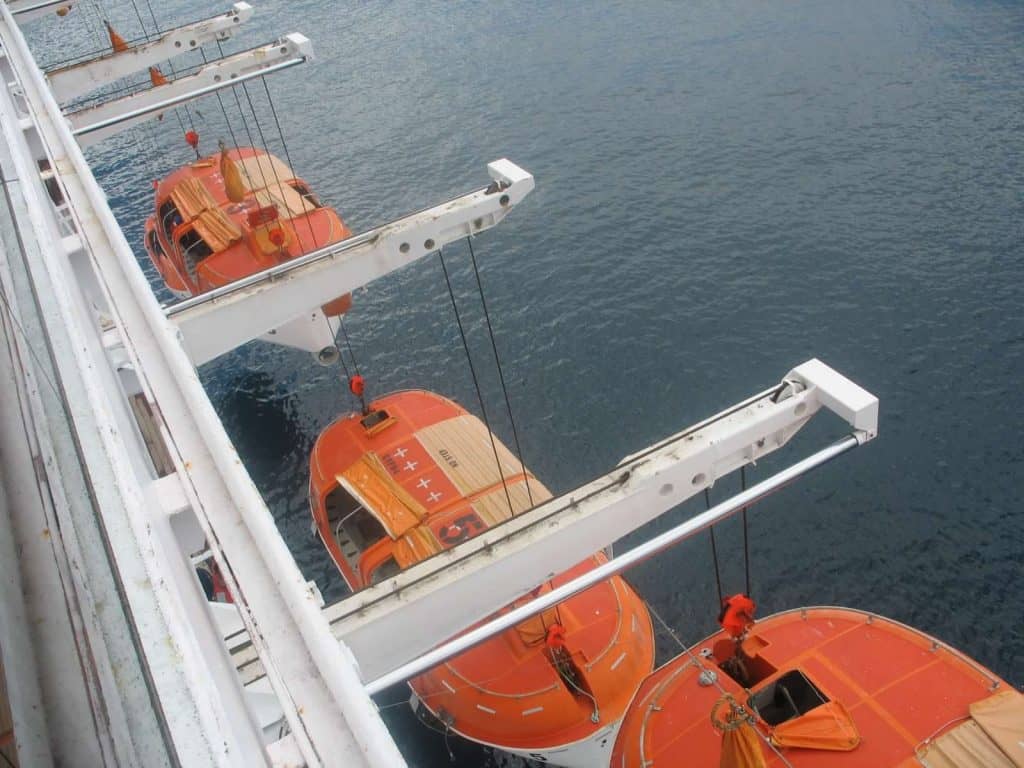
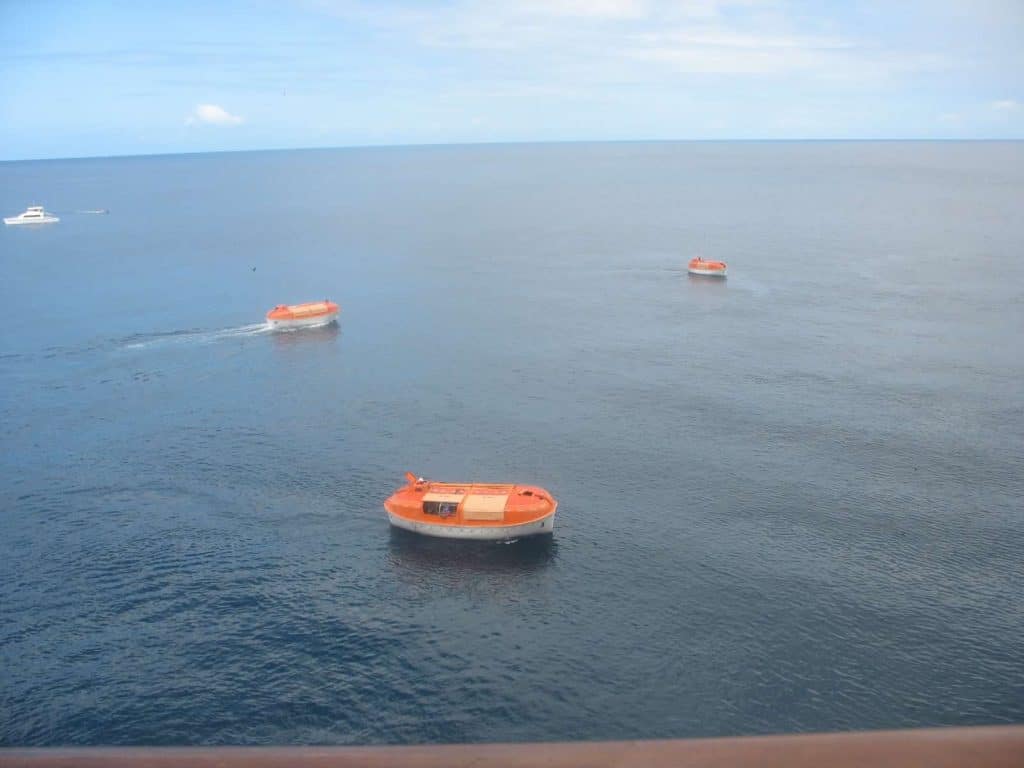
Types of Tender Boats
Not all tender boats are created equal. Depending on the cruise line and port, you’ll encounter various types designed to suit different scenarios:
- Lifeboats as Tenders: Many cruise lines repurpose their lifeboats for tendering, especially newer ships with larger and roomier designs. For example, Celebrity Edge features lifeboats with enhanced seating and better views to improve the guest experience.
- Local Third-Party Service: In some ports, tenders may be operated by local companies under the authority of the port. These boats often have larger capacities and can speed up the transfer process significantly.
- Custom Tenders by Cruise Lines: Some ships carry specialized tender vessels equipped with extra amenities like covered seating or additional stabilization to ensure passenger comfort.
When preparing for a tender port, consider practical tips like wearing comfy, slip-resistant shoes and packing a small day bag. These seemingly small details can make a big difference in your overall experience. If you’re looking for ideas, check out my guide to cute and comfy cruise shoes — they’re perfect for tender days and shore excursions alike.
When Are Tender Boats Used?
Sometimes, your cruise ship won't be able to dock directly at a pier. In these cases, tender boats come into play, transporting passengers from the ship anchored offshore to the dock or shoreline. Tender boats are often utilized at destinations where ports cannot accommodate large vessels, making them a critical part of many cruise experiences. Let’s look at where and when tender boats are used and how to identify if your cruise itinerary includes them.
Tender Ports vs. Docking Ports
Cruise itineraries can include a mix of docking ports and tender ports. The main difference lies in how passengers disembark from the ship. At docking ports, the ship pulls directly up to a pier, and passengers can walk off using the gangway. It’s a straightforward process, offering easy access to land.
Tender ports, on the other hand, involve a more unique approach. When ports lack the infrastructure to handle large modern ships or have shallow waters, the ship drops anchor offshore. Passengers then board smaller tender boats to reach land. While this extra step might sound cumbersome, tendering offers a rare opportunity to admire your ship from the water—a stunning view you won’t get at a dock.
If you’re planning an excursion or exploring the port independently, just be mindful of the time required for the tendering process. Listening to onboard announcements and picking up tender tickets early can ensure a smooth experience. For detailed tips on managing your cruise time, check out Cruise Tips and Advice.
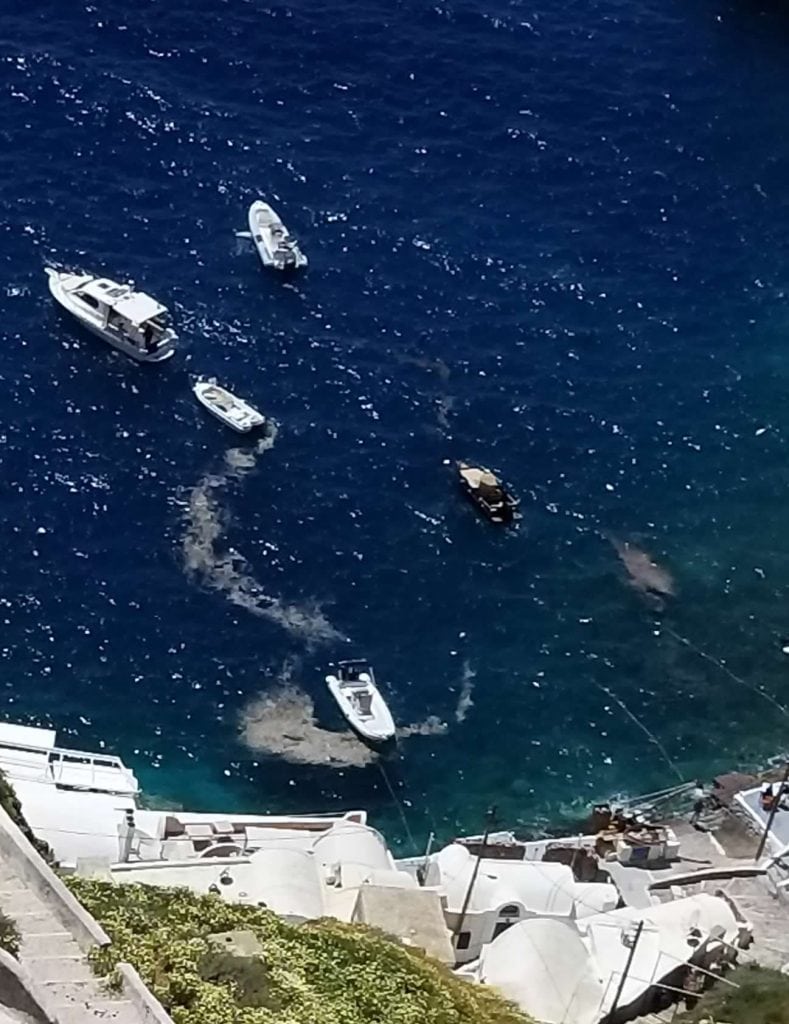
Common Cruise Itineraries with Tender Ports
Certain regions and destinations are more likely to include tender ports. Private islands and remote exotic locations often rely on tender boats, as their infrastructure isn’t sized for massive cruise ships. Here’s where tendering is most common:
- Caribbean Private Islands: Places like Great Stirrup Cay in the Bahamas and Half Moon Cay often require tendering due to their small, serene settings.
- Mediterranean Hotspots: Ports like Santorini, Greece, are known for their stunning views but necessitate tender boats because of their geography and lack of large docking facilities.
- New England and Canada: Bar Harbor in Maine is a typical tender spot, thanks to its picturesque but compact harbor.
- South Pacific Islands: Bora Bora offers breathtaking scenery—and tendering is your ticket to reaching the iconic beaches.
- Alaskan Stops: Smaller, charming ports like Sitka or Icy Strait Point often rely on tenders.
Tendering isn’t limited to the Caribbean—many Mediterranean itineraries, including Santorini, rely on it too. If you’re planning to explore Europe by ship, my European Cruise Guide breaks down what to expect at different ports and how tender boats fit into your overall cruise planning.
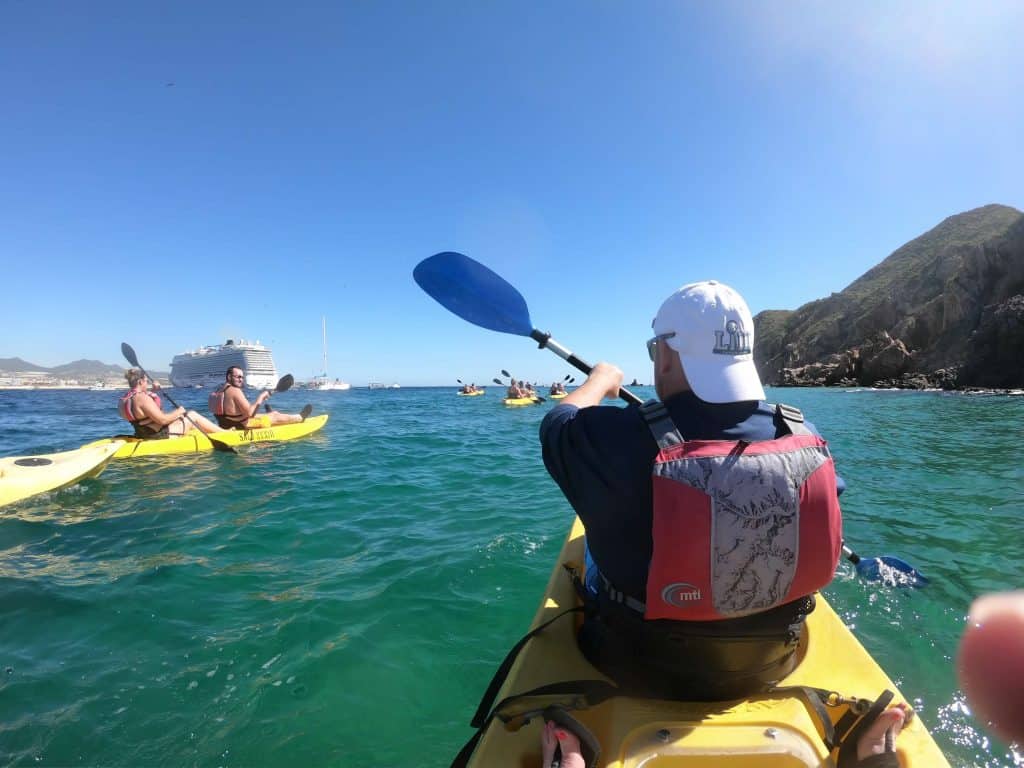
Examples of Ports That May Require a Tender
While many cruise destinations have robust docking facilities, others don’t, making tender boats a part of the adventure. Here are five notable ports where tendering is common:
- Grand Cayman (Caribbean): A bustling spot for snorkeling and diving, it uses tender boats to maintain its pristine shoreline.
- Santorini (Mediterranean): Arguably one of the most picturesque tender ports, it offers access to postcard-perfect blue and white vistas.
- Bar Harbor, Maine (USA): Known for its peaceful charm, this New England gem requires tendering to maintain its small-town feel.
- Bora Bora (South Pacific): Think crystal-clear waters and palm-lined beaches… but you’ll need a tender boat to reach the shore.
- Juneau, Alaska (Seasonal): While some ships dock directly in this Alaskan capital, tender boats are often used during busy times when docking space is limited.
For more on what to expect at tender ports, consider reading this guide from Celebrity Cruises.
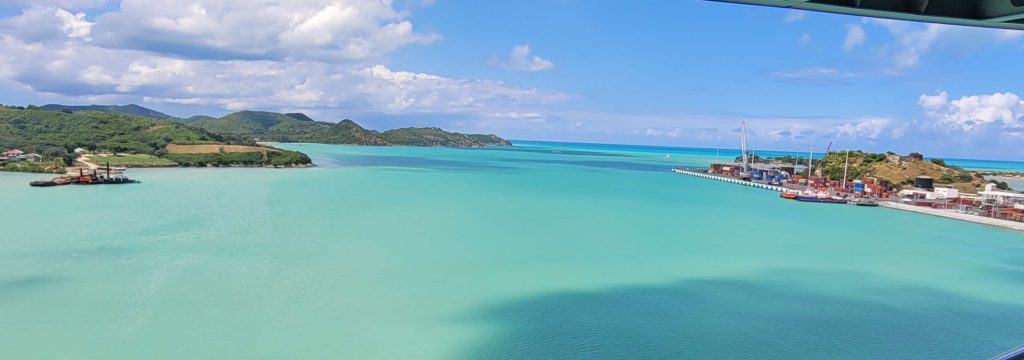
Top Destinations That Rely on Tender Boats
Tender ports offer an exciting way to experience some of the world's most picturesque and remote destinations. From exclusive private islands owned by cruise lines to charming small ports and scenic spots, these locations are often only accessible via tender boats. Here’s a closer look.
Private Islands
Many cruise lines have invested in developing their own private islands, creating a unique getaway for passengers. These destinations often lack docking facilities, which makes tender boats the primary way to get ashore.
For example, MSC Cruises‘ Ocean Cay Marine Reserve in the Bahamas is a prime destination where tender boats can be used, although they do have a pier. This island sanctuary is renowned for its eco-friendly activities and pristine beaches. Similarly, private islands like Royal Caribbean’s Perfect Day at CocoCay and Norwegian Cruise Line’s Great Stirrup Cay sometimes rely on tenders to transport passengers from ship to shore if there is not enough space at the pier.
When visiting private islands, the tender process takes on a relaxed vibe since the entire day is dedicated to enjoying the exclusive amenities of the island. Whether you’re planning to snorkel, enjoy beachside cocktails, or explore nature trails, getting there via tender boat is just the beginning of the adventure.
Remote or Small Ports
Remote and smaller ports are gems often accessible only by tender boats. While these ports lack the infrastructure for massive cruise ships, their charm and character more than make up for it.
For instance, Bar Harbor, Maine, is a quintessential New England destination known for its cozy harbor and stunning coastal scenery. Here, tender boats are essential for maintaining the port's intimate atmosphere. Similarly, ports like Santorini, Greece, and Bora Bora in French Polynesia offer breathtaking sights but require tenders due to their unique geography and shallow harbor waters.
Other notable destinations that often require tendering include George Town, Grand Cayman and Cabo San Lucas, both renowned for their crystal-clear waters and vibrant marine life. If you would like to get some first-hand information about cruising to Cabo, check out Carnival Cruise To Cabo and Ensanada.
If you’re booking independent shore excursions at these ports, it’s crucial to plan ahead. Communicate with your tour provider about tender schedules and allow extra time for disembarking and returning to the ship. For more tips on making the most of tender ports, explore this guide to shore planning.
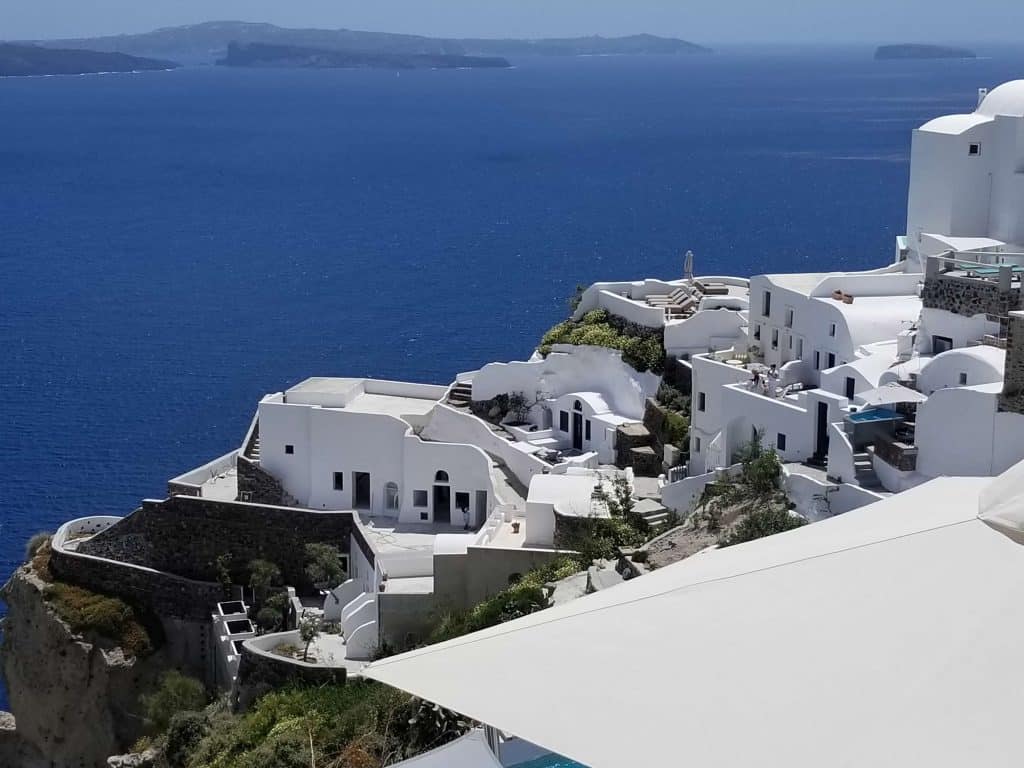
Scenic Tender Experiences
Sometimes, the tender ride itself offers an unforgettable experience. Imagine breezing over turquoise waters with your cruise ship majestically anchored in the background. For many travelers, these moments are an unexpected highlight.
Take Santorini, Greece, for example. Tendering here involves a jaw-dropping journey across the caldera, offering stunning views of whitewashed buildings perched atop cliffs. Similarly, in Halong Bay, Vietnam, tenders provide access to dramatic limestone karsts and emerald waters, enhancing the destination’s natural allure.
In the South Pacific, Bora Bora delivers an unparalleled scenic experience as tenders navigate through lagoons glowing with shades of blue you didn’t know existed. Meanwhile, Juneau, Alaska, often requires tendering during peak seasons, giving passengers close-up views of snow-covered peaks and serene icy waters.
For ports like these, tendering is not just transportation—it’s part of the adventure. Consider bringing a waterproof camera or smartphone case to capture those picture-perfect moments as you transition from the ship to shore. For additional insights into remote ports and scenic destinations, check out this guide on tender port experiences.
Tender ports provide access to destinations that remain untouched by large docking facilities, which means every journey from ship to shore promises a unique perspective. Whether you’re visiting a secluded private island, exploring a cozy small port, or enjoying an unforgettable ride through a scenic bay, tender boats ensure you don’t miss out on these one-of-a-kind experiences.
For additional tips on managing a flexible cruise itinerary, read more about this subject over at Royal Caribbean Blog.
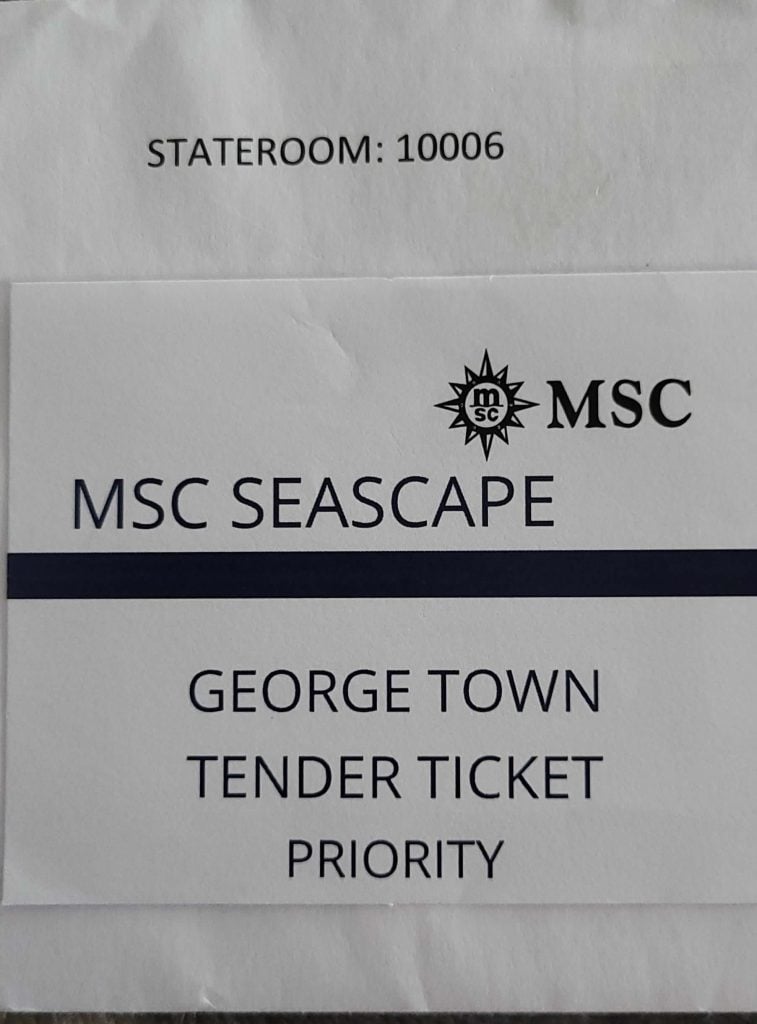
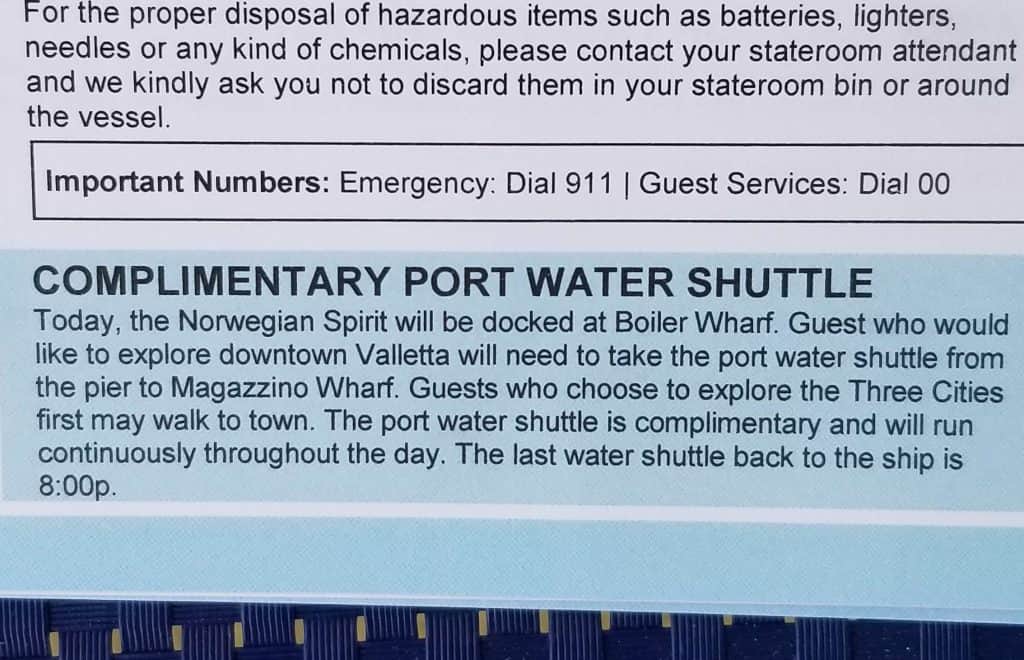
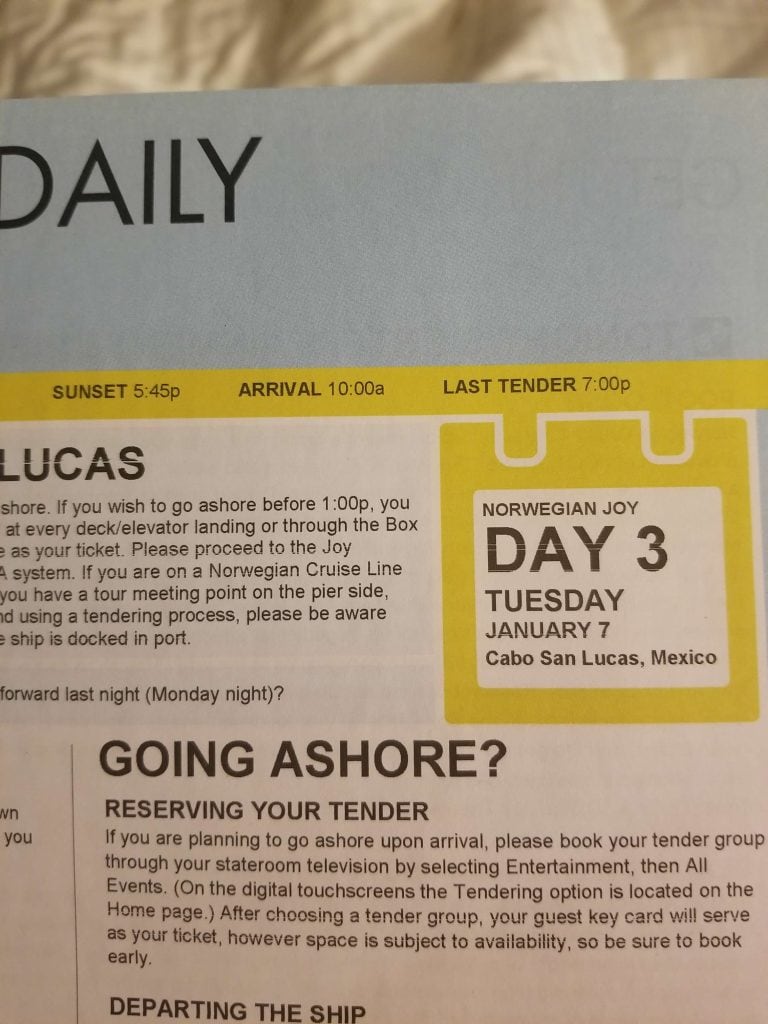
Examples of tender tickets and daily cruise newsletters showing how different cruise lines provide passengers with tendering instructions.
How to Identify Tender Ports on Your Cruise Itinerary
Are you wondering if tendering will be happening at one of your ports of call? It’s easy to find out by reviewing your itinerary and cruise documents. Cruise planners and itineraries often indicate tender ports with a small icon or footnote explaining that tender boats are required. Here’s how you can double-check:
- Cruise Line Websites: Most cruise line websites, like Royal Caribbean or Norwegian Cruise Line, provide detailed itinerary notes. Look for the word “tender” in the port descriptions.
- Daily Program: Each evening on the ship, you’ll receive a daily program highlighting the next day’s activities. Ports requiring tenders will be clearly noted, along with instructions for obtaining tender tickets.
- Online Tools: Websites like Cruise Critic and cruise apps often list tender ports within their port reviews and cruise calendars.
- Travel Agent or Booking Confirmation: If you use a travel agent, they can confirm which stops involve tendering. Booking platforms sometimes also include this detail.
When planning independent excursions with third-party providers, it’s essential to coordinate timing. Inform your tour operator about tendering requirements to ensure enough time to disembark, get to your meeting location, and return. Allowing a buffer of 30-45 minutes on either end can make all the difference in sticking to your schedule.
With this insight, you’ll have a better idea of what to expect when tendering is part of your cruise journey, letting you plan with confidence and enjoying your cruise.

What to Expect with Tender Boats
Tender boats are an essential component of many cruise adventures, providing a link between your floating home and the exciting land excursions waiting for you. While they may sound intimidating, understanding the process can turn this unique experience into another highlight of your trip. Let’s break it down into some actionable, easy-to-digest insights.
Boarding a Tender Boat
Boarding a tender boat is typically straightforward, though it’s important to follow the procedures laid out by the cruise line to ensure everything runs smoothly. Once your cruise ship reaches a port requiring tendering, the process begins with announcements from the crew. You’ll likely be instructed to pick up complimentary tender tickets, which assign you a boarding group. If you’re traveling in a suite or have booked a cruise-sponsored shore excursion, you might enjoy priority tendering—something to keep in mind when planning your itinerary.
For everyone else, just listen for your group to be called. Once it's your turn, you'll make your way to the ship's lower decks where you'll step onto the tender. Safety is always a priority. Crew members are stationed to help steady passengers and provide clear instructions, especially on days when the sea is a little choppy.
Conditions and Safety Concerns
The tendering process is heavily influenced by weather and sea conditions. Calm seas make for seamless operations, while windy or rough conditions can sometimes slow things down. Ports that use tenders may be skipped altogether if the conditions are deemed unsafe. Cruise lines prioritize passenger safety, and updates are provided regularly through the ship’s announcement system or the daily program delivered to your stateroom.
Speaking of safety—these tenders are designed to handle various challenges. They’re equipped with stabilizers and are staffed with experienced operators who frequently conduct drills. The actual time on board is often less than 10 minutes, reducing any potential discomfort for passengers. While motion sickness is rare for such quick rides, packing remedies just in case isn’t a bad idea.
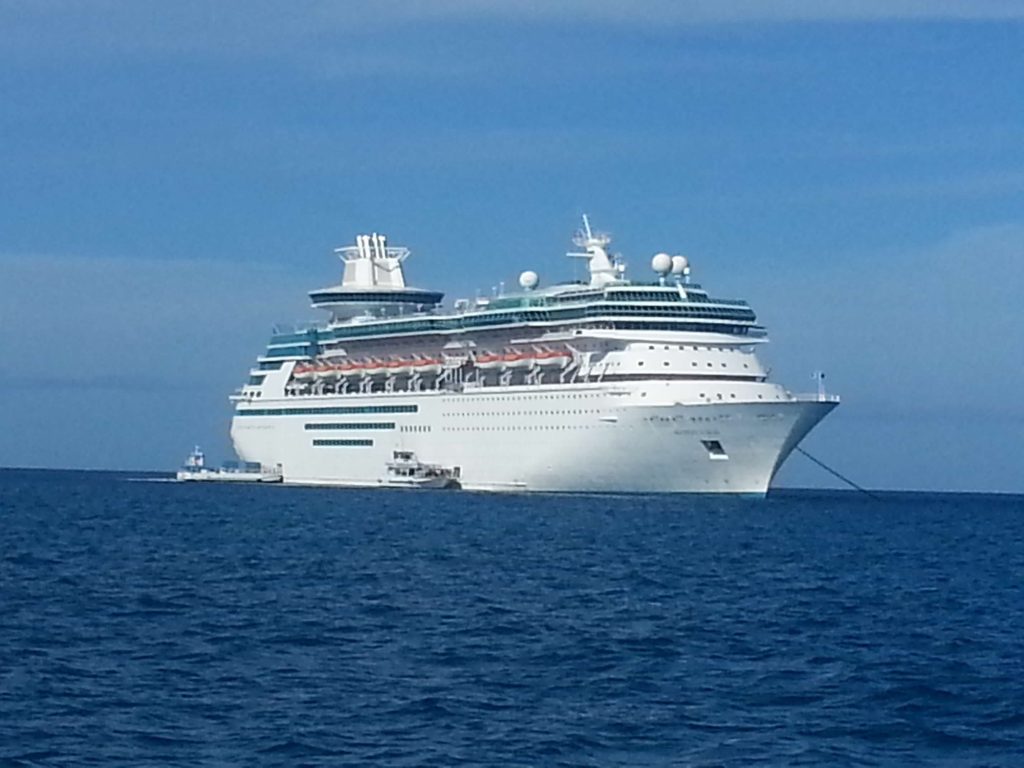
How Long Does Tendering Take?
So, how much time should you expect the tendering process to take? On average, transferring between the ship and shore via tender may take about 15 to 60 minutes, including waiting times. The exact time can vary depending on:
- Passenger Volume: Larger ships often mean longer wait times.
- Sea Conditions: Rougher seas can slightly delay boarding and disembarking.
- Tender Capacity: Some ports utilize larger, local tenders that can carry more passengers at once, speeding things along.
Want to keep your day on track? Be strategic about when you go. Early birds and guests with excursions booked are called first, so heading out mid-morning or early afternoon usually means shorter lines. If you're planning your own shore excursion, build in a buffer of at least 30–45 minutes on both ends to allow for unexpected delays. For more tips on cruise excursions, check out this guide to shore planning.
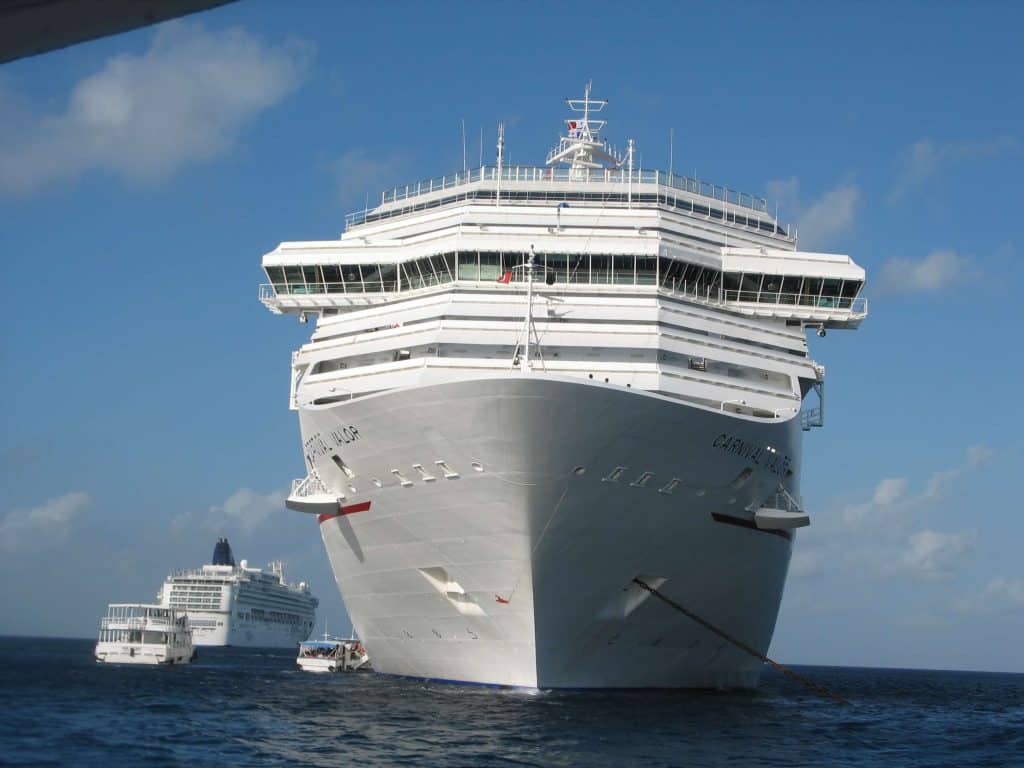
Accessibility for Passengers with Mobility Issues
Tendering might seem daunting if you have mobility challenges, but most cruise lines do their best to accommodate all passengers. Wheelchair users or those with mobility issues should inform the crew as early as possible—either during booking or when you pick up your tender tickets. Cruise staff are trained to offer assistance and will often use specialized equipment or additional support personnel for boarding.
The crew is also there to help manage the movement between the larger cruise ship and the smaller tender boat, ensuring stability. However, not all tender ports are fully accessible, so it’s worth verifying in advance. For example, some tenders may have limited space or require walking short distances. If you’re concerned, contact the shore excursions desk or guest services onboard to understand what options are available for your specific itinerary.
Ultimately, being transparent about your needs can make all the difference. Cruise lines like Celebrity and Norwegian emphasize accessibility, often going above and beyond to ensure no passenger feels left out. You can find more information about accessible cruising on Cruise Critic's accessibility page.
Tender boats are more than just transport—they’re a mini-adventure with a front-row seat to incredible views of your ship and the beautiful destination ahead. With a little preparation and understanding of the process, you’ll step onto these boats with confidence and excitement. Use these tips to feel ready no matter what lies ahead in your next port of call!
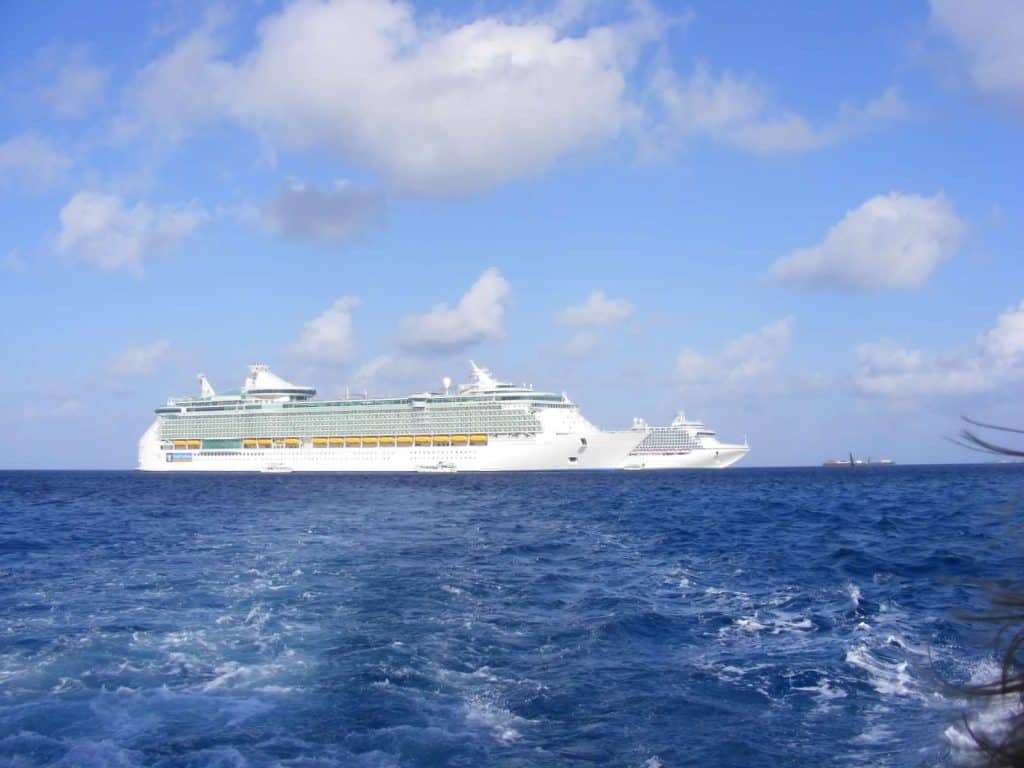
How Tender Boats Impact Your Cruise Experience
Tender boats, those compact shuttles connecting your cruise ship to the shore, play a significant role in your travel experience. For some, they’re an exhilarating gateway to exploring remote destinations, while for others, they might come with a few logistical challenges. Understanding their pros and cons will help you make the most of your journey, turning any potential hiccups into opportunities for adventure.
Pros of Using Tender Boats
Tender boats aren’t just a necessity for reaching certain destinations—they can enhance your cruise in ways you might not expect. Here are some of the most exciting benefits of tendering:
- Access to Unique Destinations: Ports like Bora Bora, Bar Harbor, and Santorini are gems that can’t accommodate large cruise ships at their piers. Thanks to tender boats, you’ll still be able to visit these stunning locations. They bridge the gap, giving you access where docking isn’t an option.
- Scenic Views: Ever seen your cruise ship from afar, peacefully anchored in turquoise waters? Tender rides give you a front-row seat to these postcard-worthy views. It’s a moment that’ll make you pause and snap a picture—or simply soak in the beauty.
- More Intimate Ports of Call: Tendering allows mega-ships to visit smaller, quieter ports. This opens up opportunities to explore serene private islands like Great Stirrup Cay or Half Moon Cay, avoiding the crowds often associated with busier terminals.
- Chance to Escape the Ship for a Bit: If you’ve ever wanted some time away from the hustle and bustle onboard, a ride on the tender can feel like a mini-break within your cruise. It’s just you, the water, and that sense of excitement as you approach shore.
For tips on planning unforgettable shore excursions, explore this guide to shore activities.
Cons of Using Tender Boats
As glorious as they can be, tender boats aren’t without their drawbacks. Here’s what you need to know about the potential challenges:
- Waiting Times: Tendering is an organized process, but with large ships carrying thousands of passengers, waits can sometimes feel long. Picking up tender tickets ahead of time and listening for your group’s turn can minimize frustration. Early risers or suite guests often enjoy priority access, so plan accordingly.
- Weather-Related Delays or Cancellations: Since tender boats function in open water, rough seas or high winds can disrupt operations. On rare occasions, ships may even skip tender ports if conditions are unsafe. If you’re planning a third-party shore excursion, always account for extra time and inform your provider about the tendering process.
- Less Stability: Moving from a stable cruise ship to a smaller, bobbing tender can be a new experience. While the trips are short (usually under 10 minutes), passengers with mobility issues or those prone to motion sickness should be prepared. Communicating your needs to the crew in advance ensures that help is available.
- Time Constraints: Unfortunately, the time it takes to board, ride, and disembark a tender does eat into your port day. This can make your schedule feel tighter, particularly in destinations with limited shore time. For insights on managing your itinerary, check out Cruise Tips and Advice.
- Limited Accessibility: While cruise lines strive to make the process as inclusive as possible, not all tenders are wheelchair-accessible. Passengers with mobility challenges may face difficulties depending on the port and tendering setup. For detailed accessibility info, review this Cruise Critic guide on tender ports.
While tender boats present a unique aspect of cruising, understanding both their benefits and challenges gives you the tools to navigate them confidently. With a bit of planning and patience, the tender process can be as memorable as the destinations they take you to.
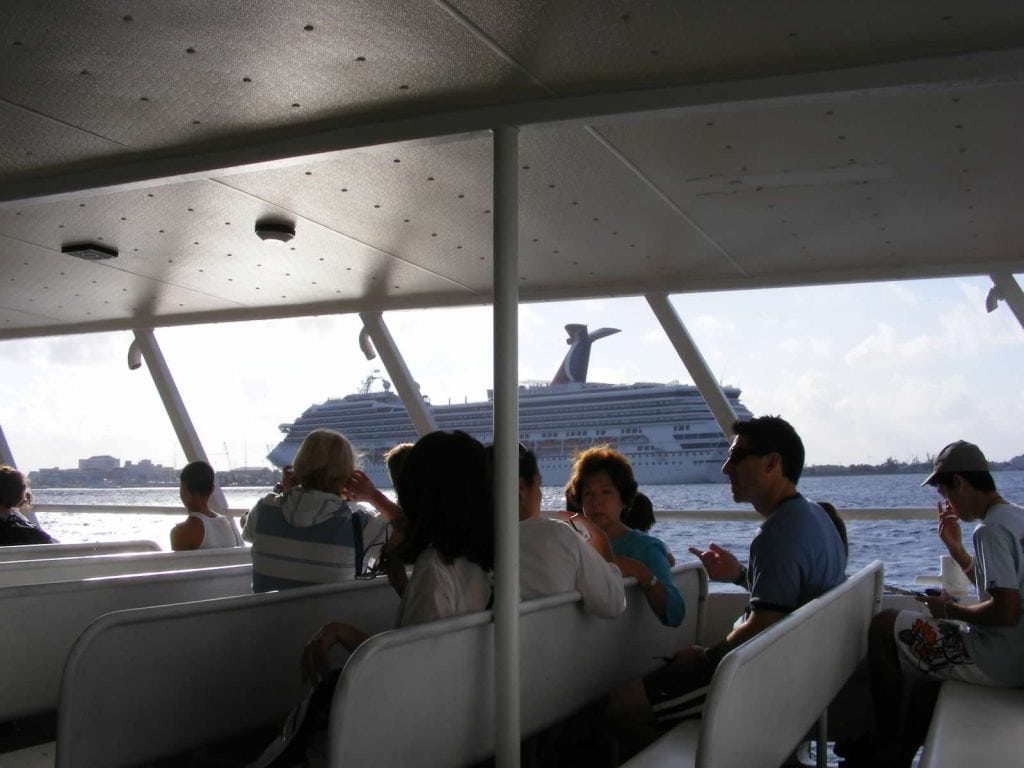
Frequently Asked Questions About Tender Boats
Navigating the world of tender boats on a cruise can feel a bit overwhelming, especially if you’re new to cruising. From wondering about safety to understanding what to pack, it's smart to prepare yourself ahead of time. Below are some of the most common questions passengers have about tender boats and detailed answers to enhance your cruise experience.
Are Tender Boats Safe?
Yes, tender boats are extremely safe. Cruise lines prioritize passenger safety above all else, and tender boats are no exception. These vessels are designed with stability in mind, often equipped with stabilizers to minimize movement in the water. Additionally, they are operated by experienced crew members who are trained to handle a variety of conditions.
Safety protocols are always in place. Before boarding a tender, crew members ensure passengers board safely with the aid of handrails and assistance. If you're worried about motion, rest assured that the journey is usually short—typically under 10 minutes. Cruise staff are always ready to assist passengers with mobility issues or those who may feel uneasy on smaller boats.
In cases of adverse weather, tendering may be canceled to ensure the safety of all guests. Always listen for ship announcements to stay updated on any changes. For more information about cruise safety practices, check out this helpful article on Cruise Critic.
Can You Stay on the Cruise Ship Instead?
Absolutely! If the idea of tendering doesn't appeal to you, you can choose to stay onboard. Cruising is all about options, and many passengers use port days to enjoy the quieter ship atmosphere. Think of it as an opportunity to have access to pools, spas, and restaurants without the usual crowds.
Staying onboard during a tender port stop can also be hassle-free. You won’t need to worry about lines, tickets, or timing your return to the ship. Plus, if you're looking for a relaxing experience, this is the perfect time to unwind with fewer passengers around.
Typically, onboard activities like trivia games or spa specials are still available, so you won’t feel like you’re missing out. For tips on selecting the perfect cruise cabin to match your preferences, check out this guide: Choosing the Best Cruise Cabin: Inside vs Oceanview vs Balcony.
What Happens if Tendering is Cancelled?
Tendering can be canceled due to unsafe weather or choppy sea conditions. While this might be disappointing, cruise lines are always upfront about prioritizing your safety. If tendering at a port isn’t feasible, ships usually adjust the itinerary. This could mean spending a sea day onboard or rerouting to a different port altogether.
Here’s what you need to do if tendering is canceled:
- Stay Informed: Listen for ship announcements or check your daily cruise program for updates.
- Be Flexible: Events like destination weddings or third-party excursions might be impacted, so having a backup plan is always advisable.
- Contact Guest Services: For ship-sponsored excursions, refunds or credits are typically issued. Independent excursions will require separate coordination, so check with your service provider.
Do All Cruise Lines Use Tender Boats?
Not every cruise itinerary or line uses tender boats, but it's common among major cruise lines when visiting destinations with limited docking facilities. Below are some examples:
- Royal Caribbean and Norwegian: Both lines frequently stop at private islands like Perfect Day at CocoCay or Great Stirrup Cay, where tender boats are sometimes required.
- Carnival: Destinations like Grand Cayman are popular tender ports for Carnival ships.
- Smaller Ships: Luxury lines like Seabourn and Ponant, with their smaller vessels, rarely use tenders as they can dock in smaller ports.
To know if your cruise involves tendering, review your itinerary or check with your cruise line in advance. Some websites, like Cruise Critic, offer detailed information about tender-specific ports.
What Should You Pack for Tender Days?
Packing strategically for tender days can make your experience much smoother. Here are some must-haves for your tender day bag:
- Waterproof Bag: Protect valuables like your phone and camera from splashes.
- Sunscreen/Hat: The ferry may be more open and you may have to take a seat in the sun, so it's best to prepare accordingly.
- Comfortable Shoes: Non-slip, sturdy shoes are essential for safely boarding and disembarking the tender.
- ID and Cruise Card: Always carry these for identification and access back onto the ship.
- Extra Time: While you can’t pack this, mentally allocating more time for the tender process is a big stress reliever.
With these frequently asked questions addressed, you’re now better equipped to handle tender boats confidently. Whether you're ashore or enjoying the ship’s amenities, remember that tendering is just another part of your cruise journey worth embracing!
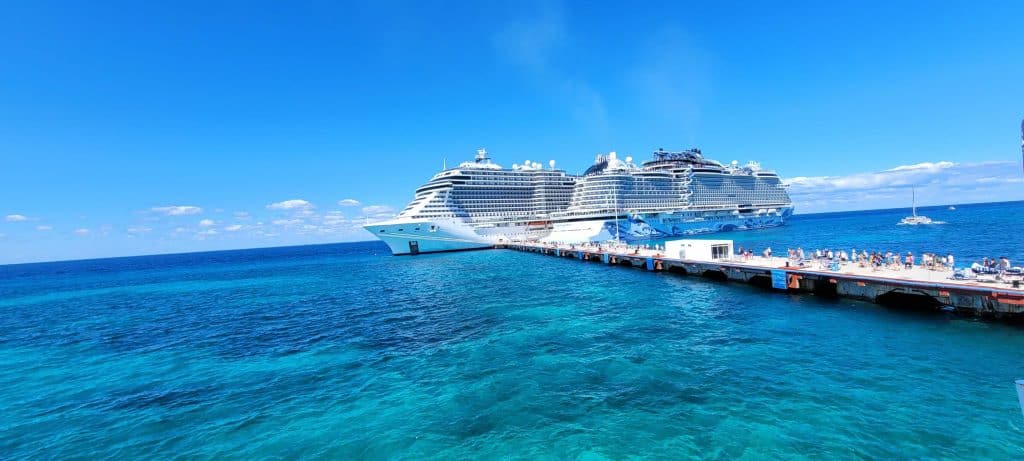
5 Tips for a Smooth Tender Experience
Tendering is an integral part of cruising when your ship can't dock directly at the port. While it might seem like a hassle, with some preparation, the process can be seamless, leaving you stress-free to enjoy your shore adventures. Use these tips to make your tender boat experience as smooth as possible.
Understand the Tendering Process
The first step to a smooth tender trip is understanding how it works. Tender boats are smaller vessels that transport passengers between the cruise ship and the shore. Cruise lines organize this process through a ticket system to manage passenger flow. Pay attention to announcements on board and collect your tender tickets as early as possible. This will help you better time your departure and match it with any excursions or activities you’ve planned. For a detailed breakdown of what to expect, check out this guide on tender ports.
Build Extra Time Into Your Schedule
Tendering takes time, and unforeseen delays can happen. Always plan extra time into your schedule for both getting ashore and returning to the ship. Got a shore excursion with a third-party provider? Make sure to communicate and coordinate the tender schedule with them to avoid unnecessary stress. Allow at least 30–45 minutes for tendering on either end of your excursion itinerary. Need tips on planning excursions? Visit this comprehensive guide on shore excursions and activities.
Pack Essentials for Tender Day
Preparation is key to having an enjoyable tender day. Carry a small, organized bag with essentials. Here’s a quick checklist:
- Ship Card and ID: These are your tickets back on board! Always keep them handy.
- Waterproof Gear: Protect phones, cameras, or other electronics from sea spray with waterproof cases or bags.
- Comfortable Shoes: Non-slip, sturdy shoes make navigating on and off the tender much easier.
- Sunscreen and Sunglasses: You’ll likely be exposed to the sun while waiting or during your ride.
Packing these basics can make a significant difference and ensure you’re ready for any surprises.
Know When to Tender
Timing your tender ride can impact your whole day. Early risers, especially those with cruise-sponsored excursions, usually board first. If you aren’t in a rush, consider going mid-morning to avoid the crowd. When returning, don’t wait until the last tender call. Crowds can pile up, and the crew will only run a limited number of boats back to the ship. Pro tip: Aim to return about an hour before the last scheduled tender to avoid unnecessary delays.
For additional strategies on managing cruise port logistics, explore this helpful resource from Emma Cruises.
Be Prepared for Weather Conditions
Weather can be unpredictable, and rough seas may lead to a bumpier tender experience—or, in rare cases, cancellation. Listen to onboard announcements and keep an open mind if plans change. In the event of cancellation, the cruise line will often adjust itineraries, arranging other activities or sea days. For more tender-specific insights, read “Top 10 Tender Tips for First-Time Cruisers”.
By following these tips and staying informed, your tender day can go from potentially stressful to an enjoyable mini-adventure.

Tender Boats Can Enhance Your Cruise
Tender boats are an essential yet exciting aspect of cruising, offering passengers the chance to access breathtaking ports that big ships can’t reach. With a little preparation, such as coordinating with third-party excursion providers and collecting tender tickets early, the process becomes smooth and stress-free.
Remember, these small vessels don’t just transport you—they’re part of the adventure, offering unique views and intimate glimpses of your ship and surroundings. Embrace the experience, stay flexible, and always build in some extra time for disembarking and reboarding. Your tender day could end up being one of the highlights of your cruise and we will be with you from Shore To Cruise!
Tender ports are especially common in the Mediterranean, Caribbean, and smaller Alaskan stops. If you’re curious how cruise style and ship size can affect the ports you visit, check out my guide to Virgin Voyages Adults-Only UK Cruise, where tendering plays a role in creating unique port experiences.
🛳 Cruise Smarter with These Guides
Looking for more cruise planning tips? Here are a few guides to help you make the most of every port day:
- 🛳 Cruise Recommendations: Find the Best Ship for You
- 🌍 European Cruise Guide: What to Know Before You Sail
- ⚓ Virgin Voyages Adults-Only Cruise UK Review
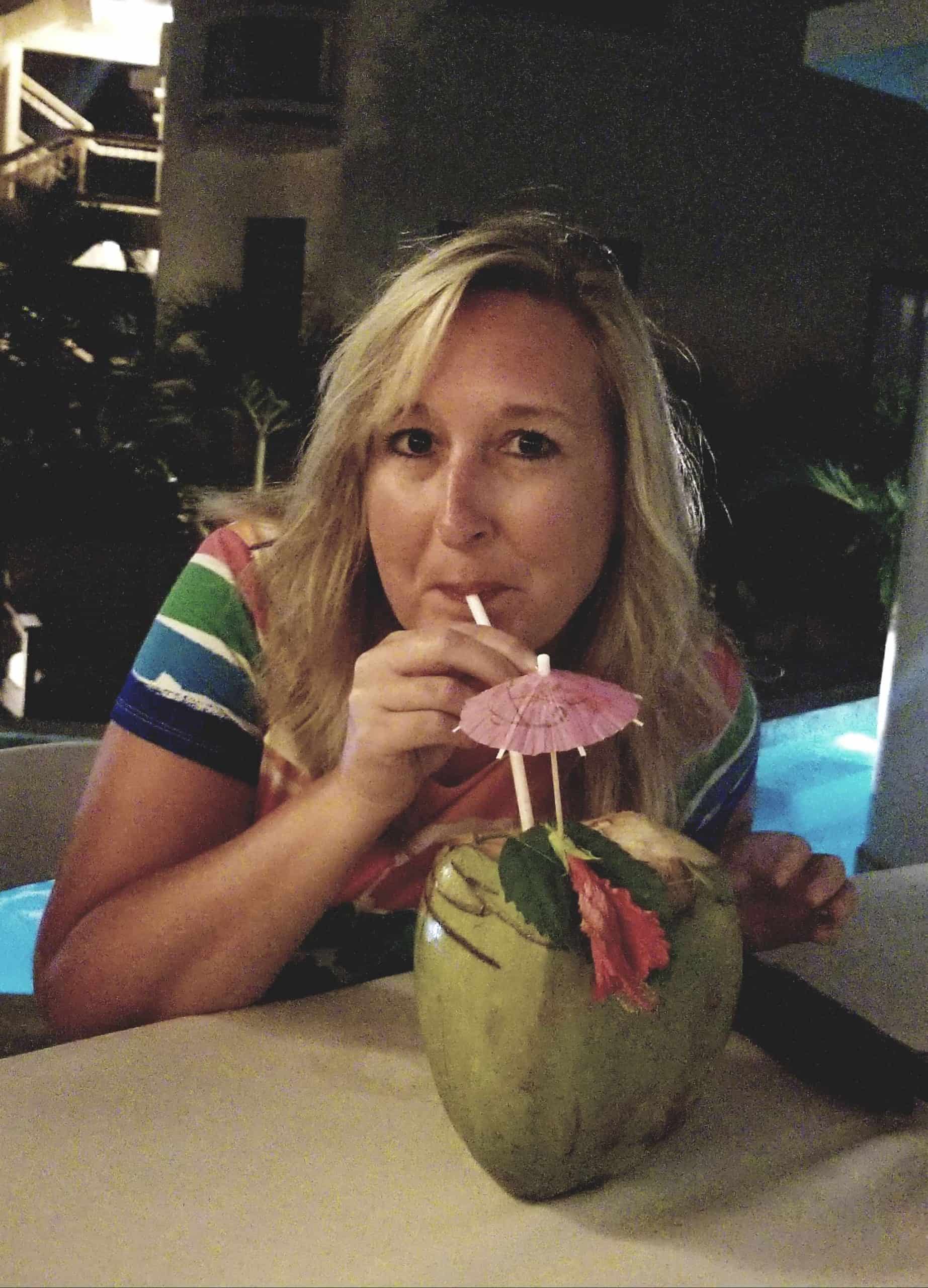
Michelle Strawcutter is a cruise educator, group travel leader, and the creator of Shore to Cruise, where she helps adults cruise smarter — from embarkation tips to bucket list itineraries. With 30+ cruises under her belt (and counting), she shares real-world insights, favorites, and “wish I knew that sooner” advice to help fellow cruisers make the most of every port and sea day.
Connect with Michelle:
Pinterest | TikTok | Facebook Group

